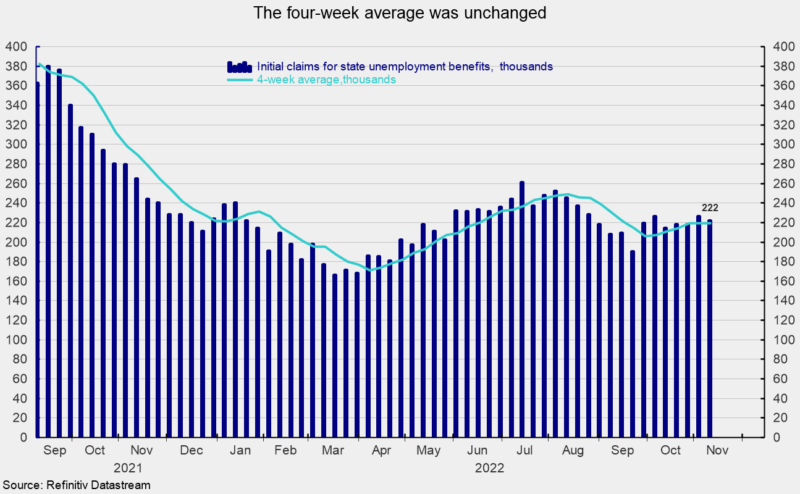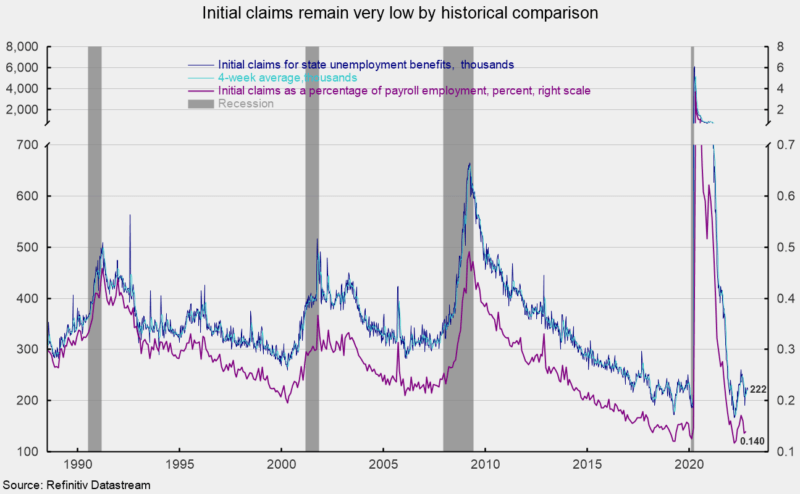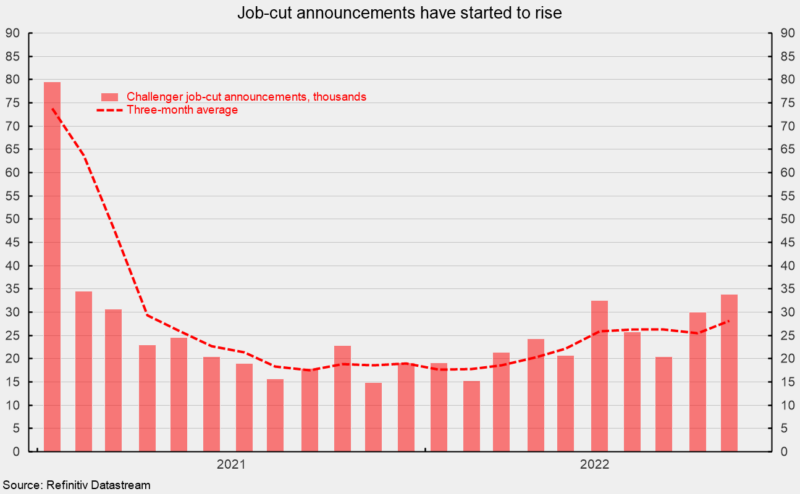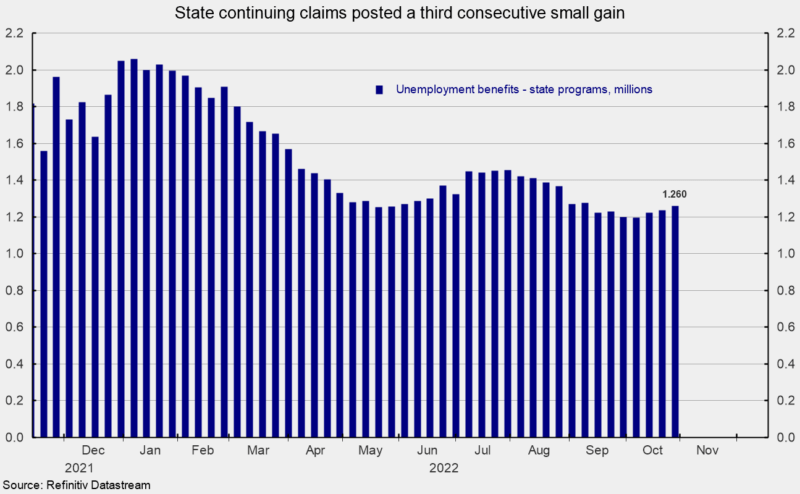Weekly Initial Claims for Unemployment Insurance Remain Stable
Initial claims for regular state unemployment insurance fell by 4,000 for the week ending November 12th, coming in at 222,000. The previous week’s 226,000 was revised up from the initial estimate of 225,000 (see first chart). Claims have risen in four of the last 8 weeks, fallen in three, and was unchanged in one. When measured as a percentage of nonfarm payrolls, claims came in at 0.140 percent for October, up from 0.136 in September and above the record low of 0.117 in March. Overall, the level of weekly initial claims for unemployment insurance remains very low by historical comparison (see second chart).
The four-week average rose to 221,000, up 2,000 for the week. The four-week average has been in a tight range of 219,000 to 221,000 over the last several weeks, suggesting some stability (see first chart). However, job-cut announcements have started to increase recently (see third chart). Overall, the data continue to imply a tight labor market. However, continued elevated rates of price increases, an aggressive Fed tightening cycle, and fallout from the Russian invasion of Ukraine remain risks to the economic outlook.
The number of ongoing claims for state unemployment programs totaled 1.260 million for the week ending October 29th, an increase of 23,634 from the prior week (see fourth chart). State continuing claims have inched up in the last three weeks but have been range bound between 1.2 million and 1.5 million since April (see fourth chart).
The latest results for the combined Federal and state programs put the total number of people claiming benefits in all unemployment programs at 1.287 million for the week ended October 29th, an increase of 24,305 from the prior week.
While the overall low level of initial claims suggests the labor market remains tight, rising job-cut announcements are a concern. The tight labor market is a crucial component of the economy, providing support for consumer spending. However, persistently elevated rates of price increases already weigh on consumer attitudes, and if consumers lose confidence in the labor market, they may significantly reduce spending. The outlook remains highly uncertain.









